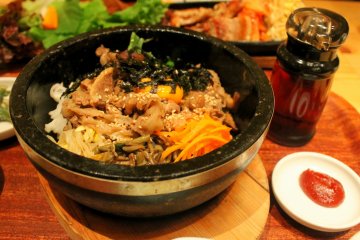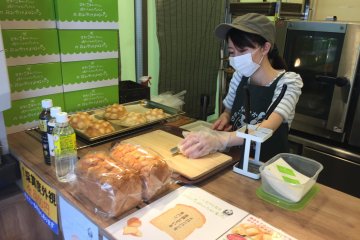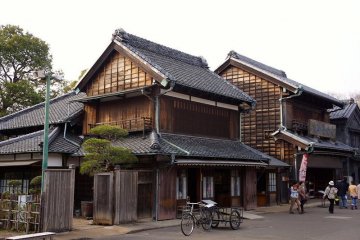
Oakhouse: Social Residence Higashi Koganei
Oakhouse Social Residence Koganei in Tokyo's Koganei suburb is a share house that offers long-term residence to both Japanese and international residents.

SORANO HOTEL overlooks Showa Kinen Park in the Tachikawa area of West Tokyo, offering 81 rooms at the new Green Springs development. All rooms come with park views and boast spacious room sizes of at least 52 square meters. All rooms come complete with balcony space and oversized windows provide plenty of light on the hotel's interiors, produced by French designer, Gwenael Nicolas.
Located on the 10th and 11th floors, find an outdoor infinity pool as well as regular bathing facilities, nano-mist sauna and a fitness centre too. Open exclusively to in-house guests and spa members.
Guests can experience comfort in a range of spacious rooms that come with park views and over 52 square meters — standard for all guest room types.
Cuisine that is based on Japanese Washoku and focused on wellbeing, enjoy a range of dishes like the Daichino Salad with over 30 varieties of seasonal vegetables and 50 varities of herbs and edible flowers.

Oakhouse Social Residence Koganei in Tokyo's Koganei suburb is a share house that offers long-term residence to both Japanese and international residents.

Head to the adult sanctuary at Water Hotel S and relax away from the busy Tokyo life.

Located in Tachikawa, the Sorano Hotel provides modern, luxurious accommodation including an infinity pool.

To satisfy your cravings for Korean cuisine, try Kusa No Hana at Granduo, just a few strides from Tachikawa Station.

Cafe Bar Foret is a small pleasant Italian cafe and restaurant in Mori Town in Fussa City in the western part of Tokyo.

Want to up the ante on your regular melon pan? At The World's Second Best Melon Pan, you can do just that - they turn them into ice cream sandwiches!

The Showa Kinen Park or Showa Memorial Park extends over the districts of Akishima and Tachikawa and is the largest park in Tokyo with its almost 1.7 km². During World War II, the place functioned as an air force base and was administered by the USA after the war In 1977 the site was returned to the Japanese government and part of it was converted into a park to commemorate the Emperor of Showa. The Showa Kinen Park offers the possibility to rent bicycles at the entrance and has an 11km long bicycle route. There is also a lake with rowing boats, small stalls for snacks and drinks and barbecue areas. The park is particularly popular in autumn, when the leaves change color and you can walk through a corridor made of gold-colored ginkgo trees, and in spring when the cherry blossoms are in bloom. The many lawns between the cherry trees offer the opportunity to have a picnic there for hanami. In winter, parts of the park are lit for Christmas.

Sanrio Puroland, or Hello Kitty Land, is an indoor amusement park based on the popular character "Hello Kitty". The amusement park, which opened in 1990, is located in Tama New Town in Tokyo and also shows other characters from the Sanrio company (My Melody, Cinnamoroll, Gudetama etc.). Sanrio Puroland has over 1.5 million visitors a year and is 4.5 hectares in size. The on-site attractions are suitable for children of all ages. The parades of Hello Kitty and other Sanrio characters are also highly recommended. The park also has themed restaurants and shops dedicated to specific Sanrio characters that sell exclusive goods.

In 1993, the seven-acre Edo-Tokyo Open Air Architecture Museum was opened by the Tokyo Metropolitan Government as part of the Edo-Tokyo Museum. The aim of this museum is to preserve historic buildings of great cultural value that are not in their current location can be relocated, reconstructed, preserved and exhibited and this valuable cultural heritage can be passed on to future generations. The open-air museum offers the following exhibitions: An introduction in the visitor center. Restored buildings and scenes from everyday life in the Edo period. Architectural remnants and recreation of an urban landscape A collection from the Original Musahino Folklore Museum in a special exhibition. The various exhibitions can be viewed within the exhibition rooms or in the actual open-air museum.